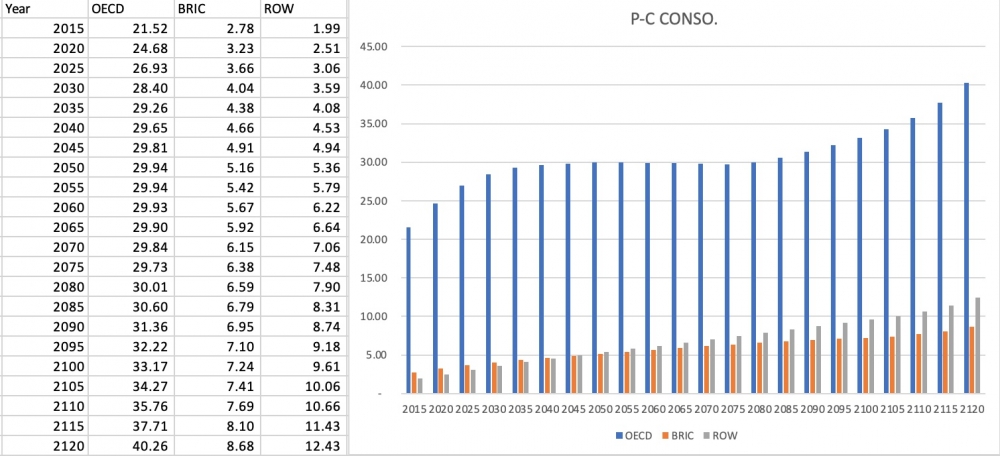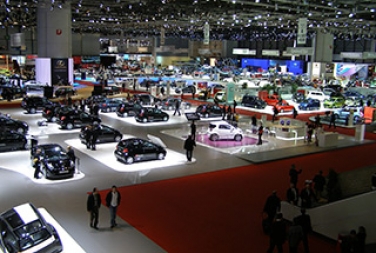Return
Scenario with cumulative emissions budget of 1,170 gt of CO2 and DAC
An SCEB at 1'170 GT CO2
We assume that a global climate agreement has been reached that will limit the cumulative emissions budget from 2020 on to 1170 Gigatons of CO2.
CO2 Price
A market for carbon exists. The emissions budget is split among the coalition as follows: OECD 10%, BRIC 40%, ROW 50%.
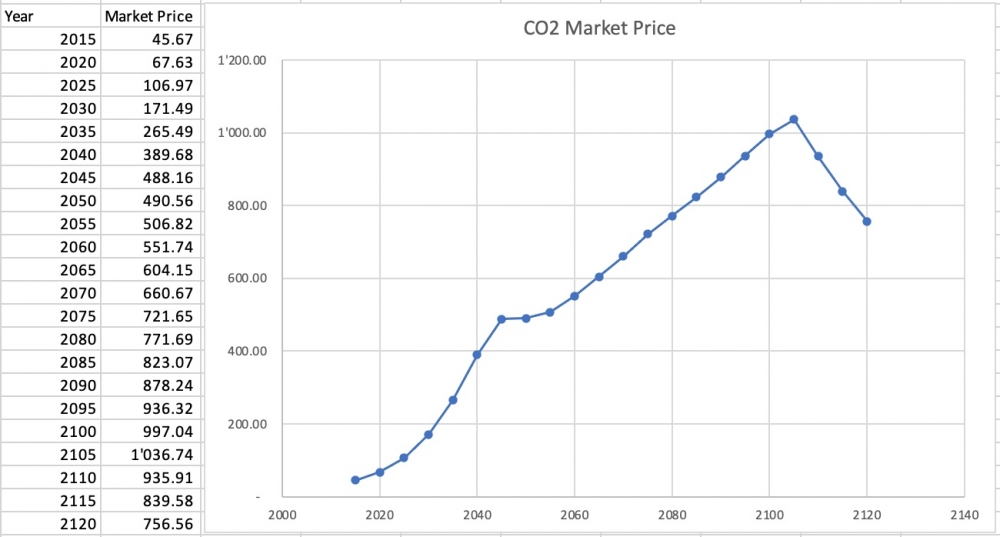
Production
ROW is overtaking OECD in output, by 2060.
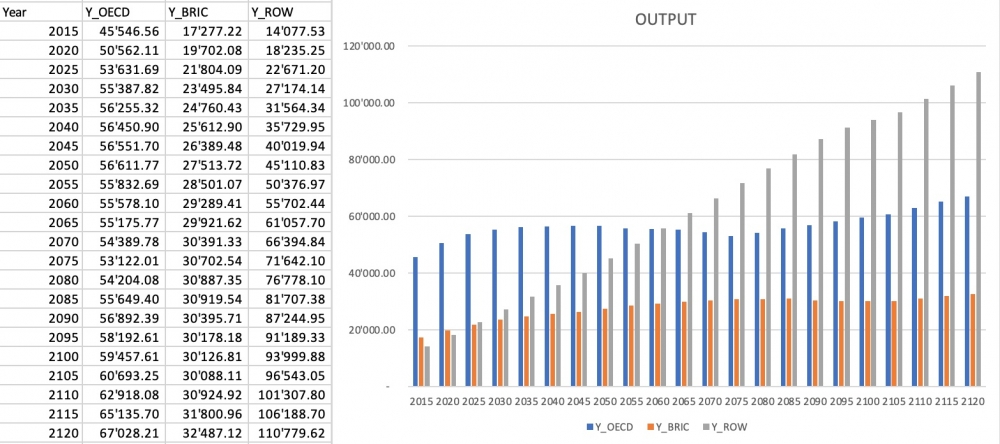
SCEB decline
All the emission rights initially granted to the three coalitions of countries will have been used after a century. After that, emissions will have to be fully offset by negative emissions (DAC).
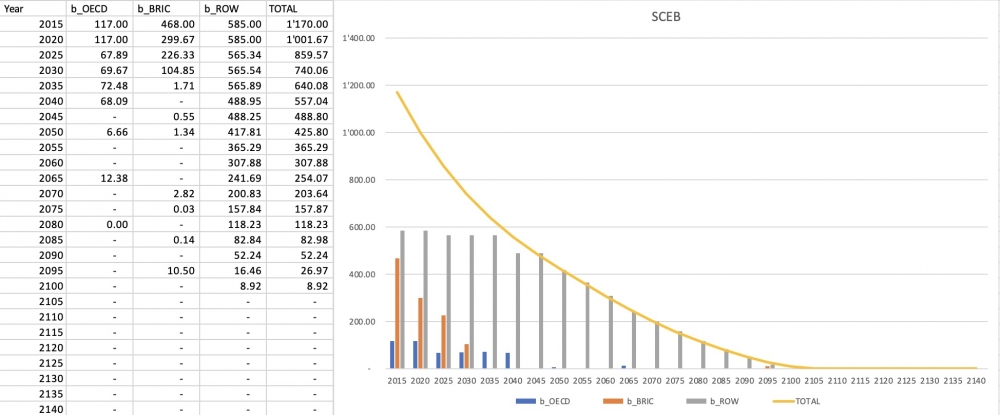
GHG and Negative Emissions
Global emissions per year (E) and DAC Activity (negative emissions expressed in Gt of CO2 captured and sequestered per year).
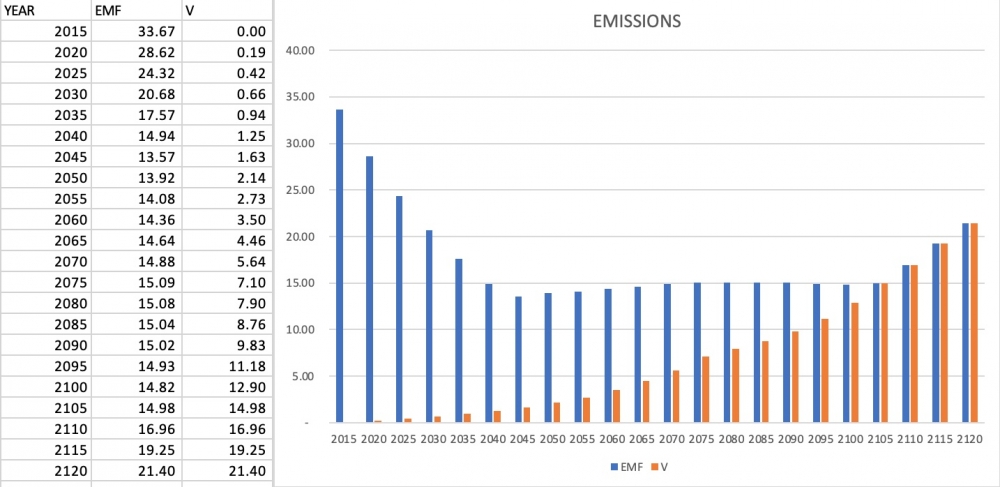
SAT Increase
The average atmospheric surface temperature will increase by no more than 2 degrees Celsius by the end of the century and will stabilize after that.
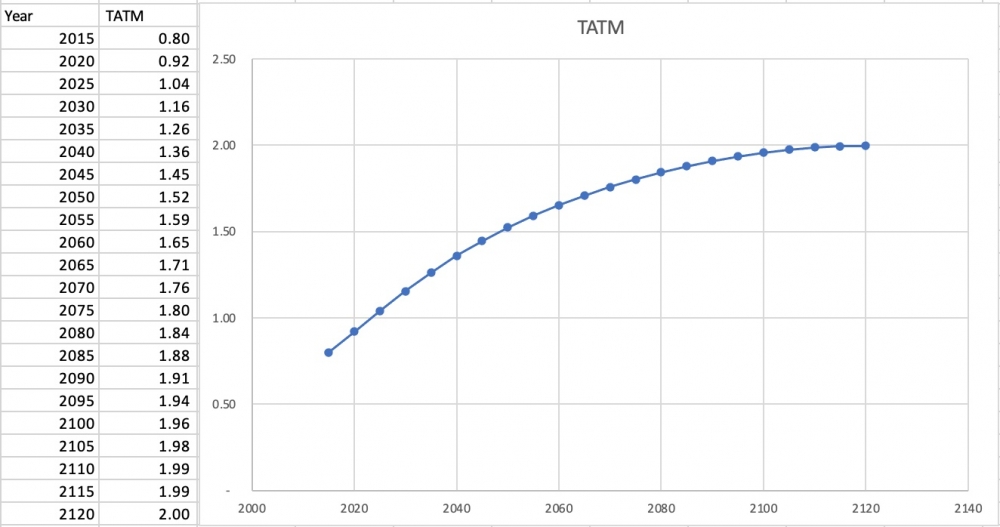
Per Capita Consumption
The per capita consumption increases slowly for ROW, increases slowly, and then decreases for BRIC, grows, and then reduces significantly for OECD.
